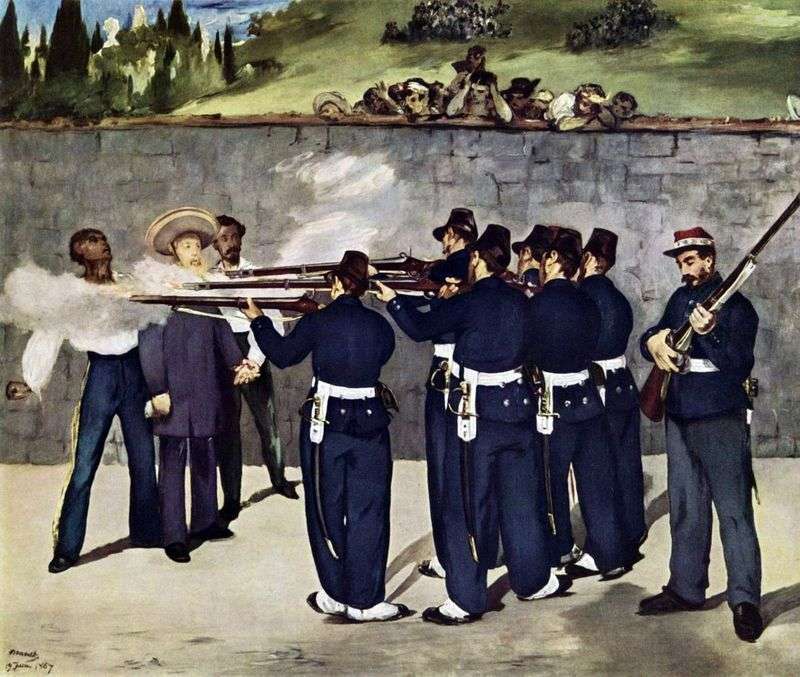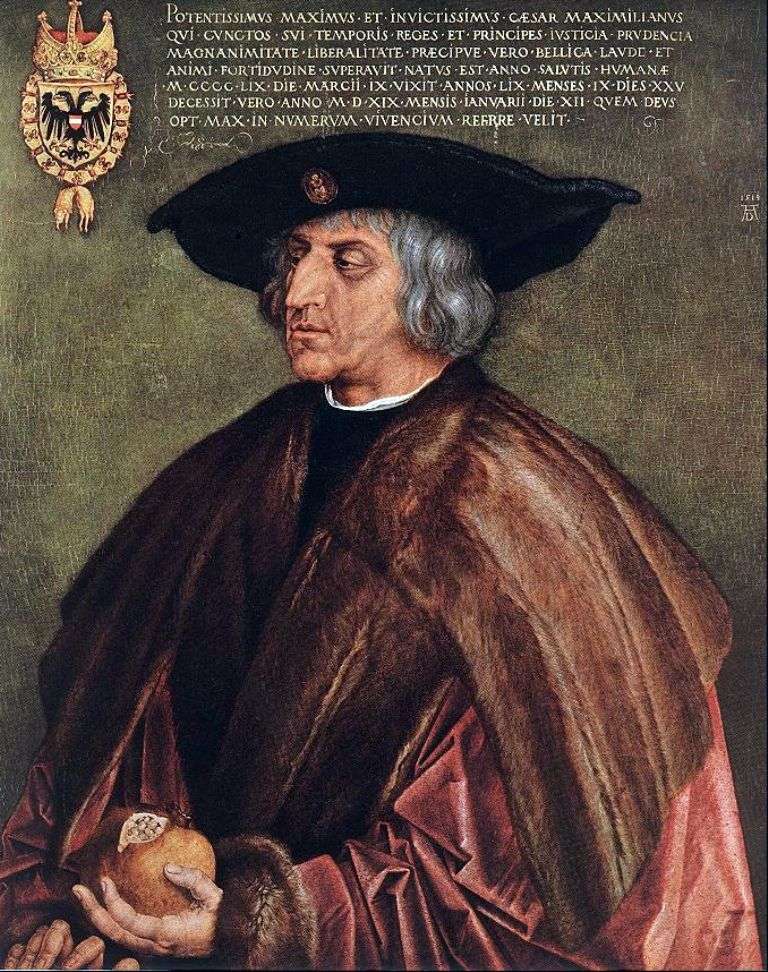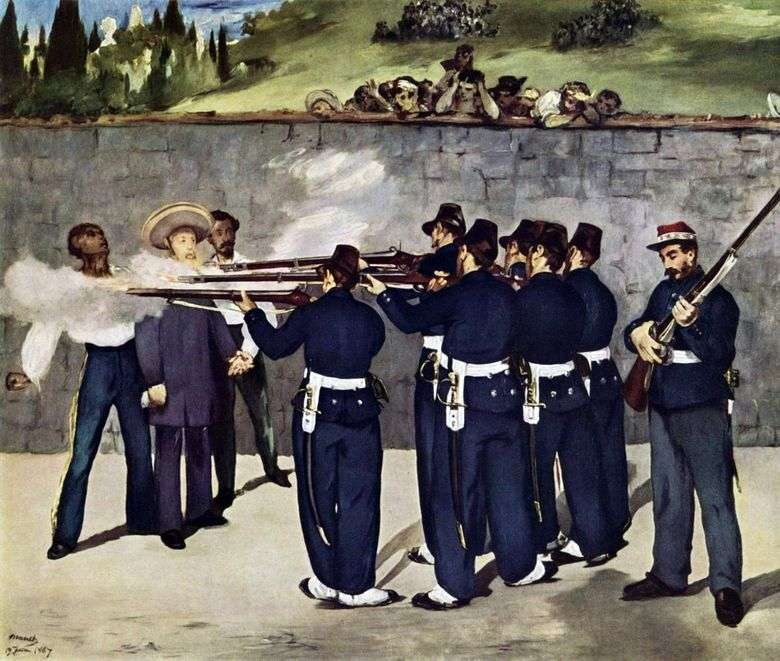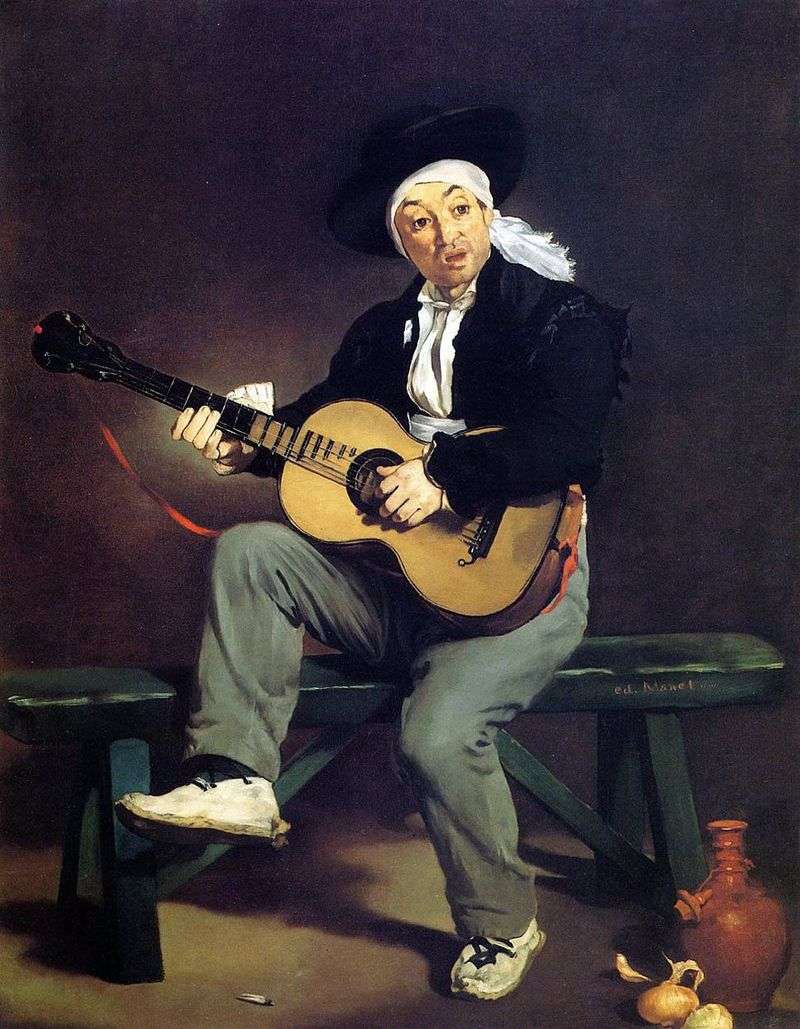
The tragic picture, on which Mane worked for two years, was devoted to political events in Mexico. The younger brother of the Austrian emperor Franz Joseph Maximilian was seated on the throne of Mexico. But to enjoy the reign of the Austrian archduke did not have time – as soon as he reached his own country, he faced stiff resistance from the Republicans, whose leader was Benito Juarez.
After the bloody confrontation Maximilian was captured and sentenced to death. Requests from all over Europe flowed to the new government asking to pardon the representative of the ruling house of Austria – European monarchs, US president, Hugo, Garibaldi appealed to Republicans, but a military court was held and the last Mexican monarch was shot.
On the canvas, we see two groups – most of the space of the picture is occupied by a soldier with long rifles, in the corner of the picture is the emperor and his few associates. Around the doomed group, there is no one at least a small place – this Manet seemed to emphasize Maximilian’s deplorable position, cornered.
From the whole dramatic plot, Mane chose that barely perceptible instant when the bullets had already fired from their guns and had only reached their goal. Some figures of the death force have already thrown back, and some still stand unshakably. The tragedy of the situation increases a hundredfold, when you notice a small group of curious onlookers – their heads indifferently stick over a gray high wall.
It is known that creating this canvas, the artist focused on another well-known picture – “The shooting of the rebels on the night of May 3, 1808” painted by Francisco Goya, one of the favorite painters Manet. These works are united by the same exposure, although Goya chose a moment that shows the doomed in front of a volley. Despite the similarity of the paintings, Manet’s work is still not distinguished by such drama, psychology and movement – it is more static and calm, but no less expressive and talented from it.
 Portrait of Emperor Maximilian I by Albrecht Durer
Portrait of Emperor Maximilian I by Albrecht Durer Cherry Boy by Edouard Manet
Cherry Boy by Edouard Manet Dead bullfighter by Edouard Manet
Dead bullfighter by Edouard Manet Old musician by Edouard Manet
Old musician by Edouard Manet El tiroteo del emperador Maximiliano – Edouard Manet
El tiroteo del emperador Maximiliano – Edouard Manet Spanish guitar player by Edouard Manet
Spanish guitar player by Edouard Manet Roses in a Crystal Vase by Edouard Manet
Roses in a Crystal Vase by Edouard Manet Christ with the Angels by Edouard Manet
Christ with the Angels by Edouard Manet